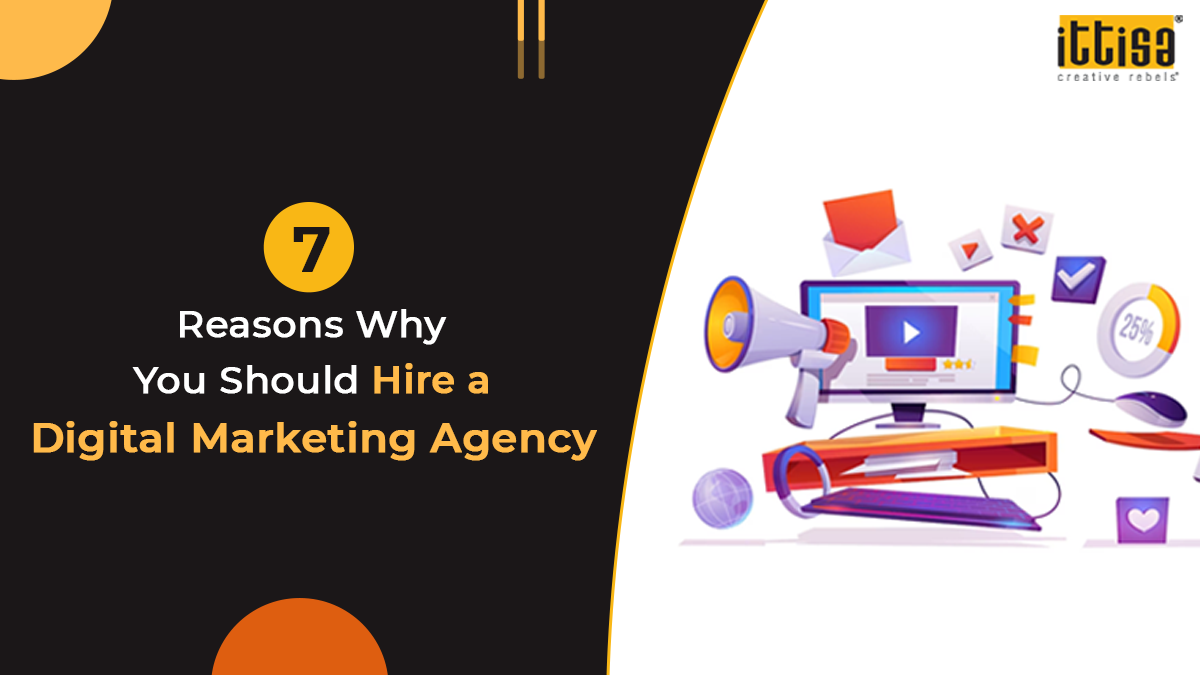November 30, 2023
Measuring Digital Marketing ROI: A Complete Guide
Wondering if it’s worth all the extra time and money you’re putting into your digital marketing?
Return on investment, or ROI in digital marketing is a measurement of marketing success.
When it comes to digital marketing, the main focus is to increase online visibility, and therefore, ROI may be more challenging to calculate.
While there is no one calculation for every situation, you can measure the effectiveness of a campaign in many different ways, depending on your overall objectives.
In some cases, it will be on overall reach or engagement; in others, it will be conversions or click-through rates.
In this guide, we will discuss various aspects of measuring digital marketing ROI and the best approaches you can take to maximise your results.
 There are several key metrics to monitor when measuring the ROI of your marketing strategy:
There are several key metrics to monitor when measuring the ROI of your marketing strategy:

Understanding Digital Marketing ROI
ROI in digital marketing is a measurement of the effectiveness of your digital marketing efforts. It helps you determine how much revenue your digital marketing initiatives generate in comparison to your investment. Measuring ROI is important because:- It allows business owners and marketers to determine the success of their campaigns.
- It helps allocate resources effectively by identifying which strategies yield the best results.
- It ensures that your digital marketing budget is well-spent on tactics that drive results.
ROI Metrics For Marketing
 There are several key metrics to monitor when measuring the ROI of your marketing strategy:
There are several key metrics to monitor when measuring the ROI of your marketing strategy:
- Click-Through Rate (CTR): CTR is calculated by dividing the total number of clicks on an ad or email by the number of times the ad or email was viewed.
- Conversion Rate: This refers to the percentage of visitors who perform a desired action on your website, such as making a purchase or signing up for an email list.
- Cost per Acquisition (CPA): CPA measures how much it costs to acquire a new customer through a specific campaign or channel.
- Lead Close Rate: This metric refers to the percentage of leads that convert into paying customers, an indicator of the effectiveness of your sales efforts.
- Net Promoter Score (NPS): NPS is a measure of customer satisfaction and loyalty. It's calculated based on the customers' likelihood to recommend a business to others.
- Average Order Value (AOV): AOV calculates the average amount spent per transaction by dividing total revenue by the number of transactions.
- Return on Ad Spend (ROAS): ROAS measures the revenue generated for every dollar spent on advertising. It's a direct indicator of the effectiveness of your advertising campaigns.
- Customer Lifetime Value (CLV): CLV estimates the total revenue a customer will generate for your business over their lifetime.
- Blog Click-Through Rates: This indicates the percentage of blog readers who click on a call-to-action within a blog post.
- Traffic to Lead Ratio: This metric provides insights into the effectiveness of your website in converting visitors into leads.
How To Calculate ROI In Digital Marketing

- Establishing Goals and KPIs
- Assigning a Monetary Value to Conversions
- Tracking Expenses and Revenue
- Calculating the Return on Investment
ROI = (Revenue - Cost) / Cost * 100%
This equation will give you a percentage that represents your return on investment. A positive ROI indicates that your digital marketing efforts are profitable, while a negative ROI indicates a loss.Tips For Maximizing ROI In Digital Marketing
- Develop clear objectives: Start by identifying your campaign goals and defining measurable KPIs. This will allow you to track the success of your efforts and adjust as needed to meet your objectives.
- Target the right audience: One of the most crucial elements of any marketing campaign is reaching the right audience. Focus on creating high-quality buyer personas to better target potential customers.
- Use multiple channels: Utilize various digital channels, including social media, email marketing, content marketing, and paid advertising. An integrated approach helps ensure your message reaches the desired audience consistently through their preferred channels.
- Leverage data-driven insights: Collect and analyze data from your online campaigns to uncover trends, identify successful strategies, and make informed decisions.
- Implement search engine optimisation (SEO): Optimise your website and content for search engines to increase organic visibility and drive more targeted traffic to your site.
- Create engaging content: Develop impactful content that resonates with your target audience and drives engagement. Use compelling visuals, video content, infographics, and interactive elements to capture attention and encourage sharing across different platforms.
- Remain adaptive: Digital marketing is an ever-changing landscape that requires adaptability and agility. Regularly evaluate your current strategies' performance against industry best practices and adjust when necessary.
- Optimise conversion rates: Ensure that each element of your digital marketing campaign is optimised for conversions - from the design of landing pages to email subject lines. Employ conversion rate optimisation (CRO) techniques like heatmaps and user testing to make data-driven improvements.
- Emphasize personalization: Personalize your marketing messages based on individual customer preferences, behaviour, and demographics. Utilize marketing automation tools to streamline this process and create more targeted messaging.
- Monitor and measure ROI: Regularly track and analyze your campaign results to understand their effectiveness. Determine which strategies are generating the most value and allocate more resources to those efforts.



